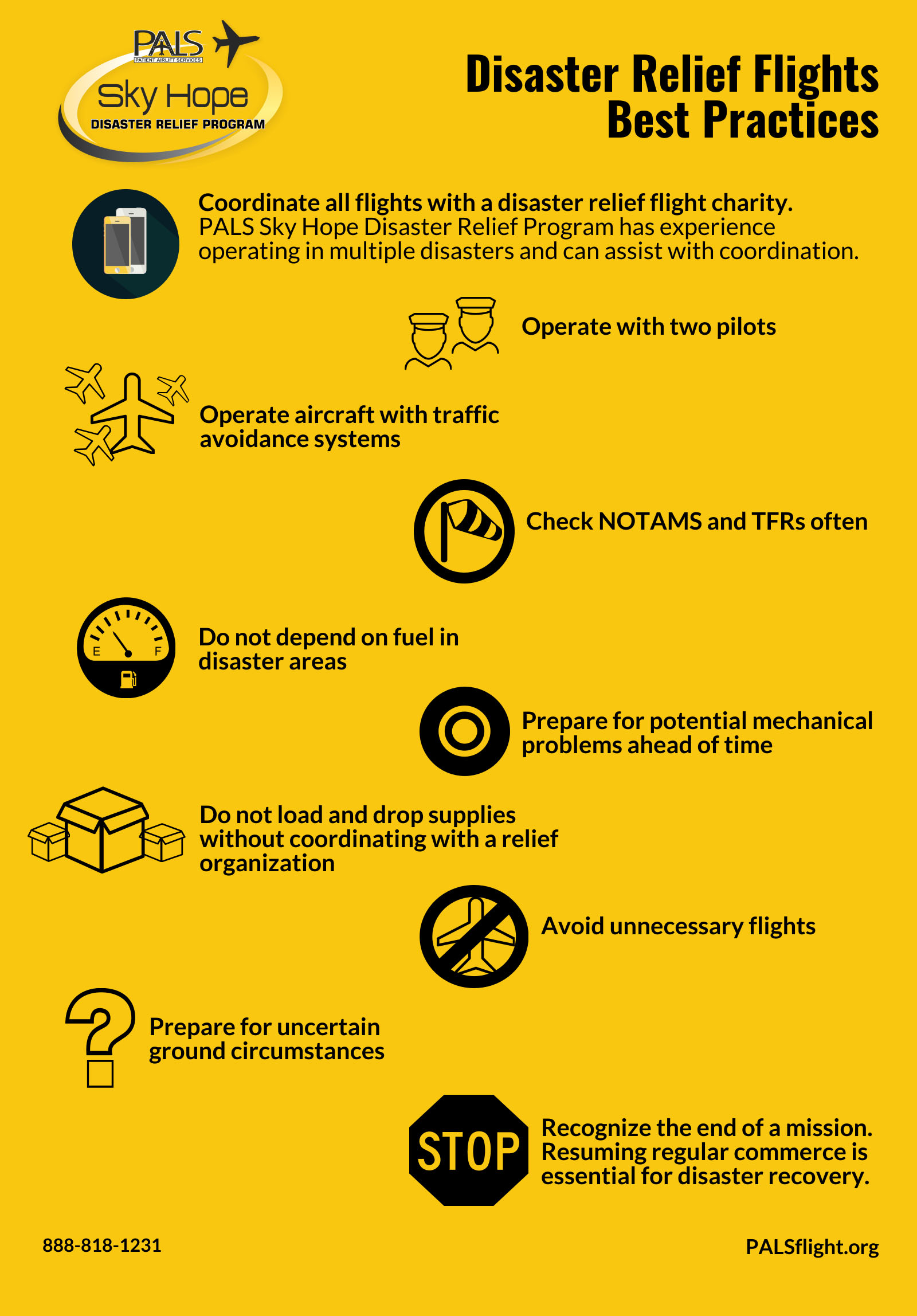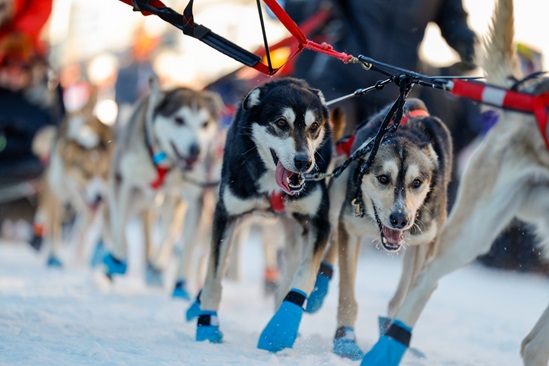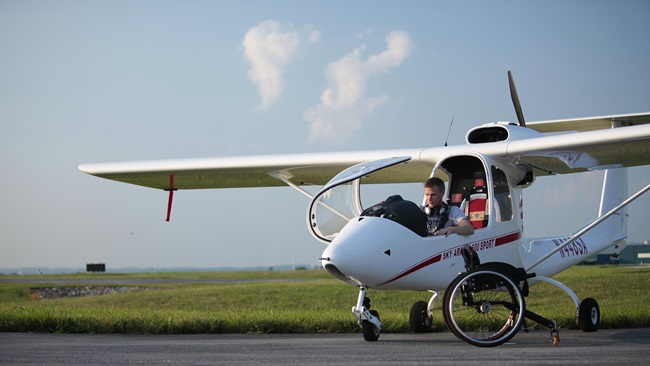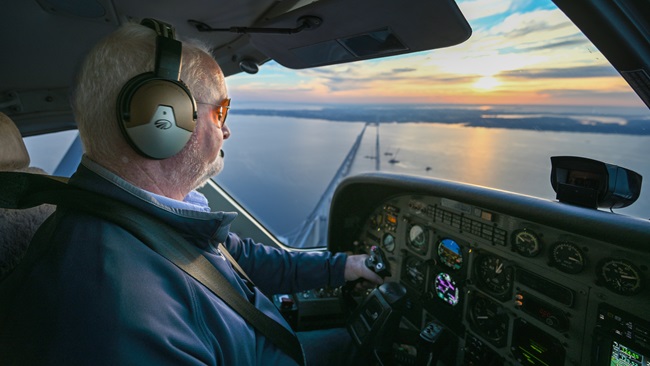Tips for flying disaster relief missions
In the wake of natural disasters such as Hurricanes Harvey and Irma, general aviation serves as a key link in delivering much-needed relief supplies to areas that have become inaccessible by road, and pilots are among the first to volunteer to help. Patient Airlift Services recently released disaster relief best practices through its Sky Hope Disaster Relief Program, reprinted with permission from the organization.
Coordinate all flights with a disaster relief flight charity—Airspace and airports often are congested after a disaster. In addition, information changes by the hour. Coordinating with a disaster relief flight charity can ensure that resources are being maximized in an effort to save lives and help people. Sky Hope works with the National Business Aviation Association, AOPA, Air Care Alliance, and many government agencies to provide the most up-to-date information to pilots. Additionally, the organization often combines needs on the same flight, maximizing the capability of its aircraft.
Stay on top of notams and TFRs—Check notams regularly, and again prior to departure, for every flight. They can be enforced at any time.
Experience is very important during a disaster—The abnormal conditions during relief efforts call for experienced pilots who are instrument rated and current.
Operate aircraft with traffic avoidance systems—Radar and flight following may or may not be available in the disaster area. In addition, flight operations likely will be in very high volume, including private and government aircraft. Additionally, helicopters often operate in disaster areas, causing additional air traffic.
Do not depend on fuel in disaster areas—Often fuel supplies have not been replenished, or there may be limited availability. If fuel is available, there may be long waits to receive it, or cash may be required to pay.
Prepare for potential mechanical problems ahead of time—Resources to help fix flat tires or address aircraft discrepancies likely will not be available. Consider adding a few spare tires and other items that may be needed for any common mechanical issues. You do not want to get stuck in the disaster area due to an aircraft mechanical malfunction.
Do not load and drop supplies without checking in with a relief flight charity—Dropping supplies on the ramp of a disaster area airport complicates the relief effort and can hinder ground operations. Please coordinate with the relief flight charities for any supply or volunteer needs. If you are flying supplies for a charity flight organization, use proper weighing equipment and prepare manifests.

Avoid unnecessary flights—If you are flying for curiosity's sake, don’t. There are many needs to be met after a disaster, and adding another aircraft operation can use valuable time and resources needed for other flights.
Prepare for uncertain ground circumstances—Disaster areas are constantly changing. You may arrive at an airport under military control. You may have to deal with security issues on the ground. There may be evacuees at the airport asking for transportation. Be prepared.
Recognize the end of a mission—One of the most important things a community can do after a disaster is to resume normal economic operations. An abundance of donated supplies or donated flights can cause disruptions to normal local commerce.
In addition to these tips from Patient Airlift Services, pilots should consider how they will be most effective. Anyone immediately flying to an area after a disaster should be prepared to be self-sufficient with their own food, water, tents, and aircraft parts to avoid being a burden on other relief organizations and volunteers.
Pilots who want to help but live too far from a disaster area or don’t have an airplane that is right for the mission might consider donating what would have been spent on fuel to fly to the area to a charity organization.



